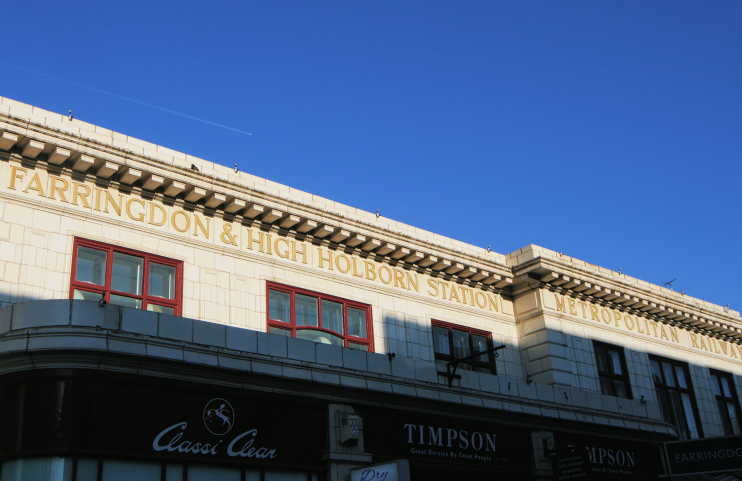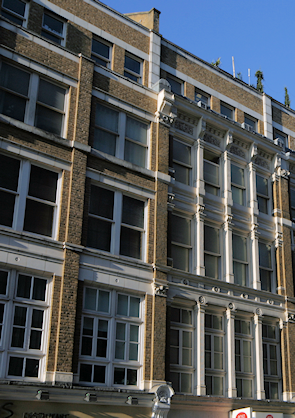Farringdon
Farringdon, City/Islington
A historic underground station and its immediate environs, situated in south Clerkenwell

Farringdon’s name defines only a compact quarter in the immediate vicinity of the station because there are other well-known localities close by, such as Smithfield and Hatton Garden. The city wards of Farringdon Within and Farringdon Without cover a much larger area south of Charterhouse Street.
Documents of the late 13th century record William de Farindon (whose name was spelt several ways, sometimes within the space of a single paragraph), who was a goldsmith and a City of London alderman. He probably originated from another Farringdon (there are a couple in the West Country) or Faringdon in Oxfordshire, and bestowed his appellation on this locality.
This area lay well away from the heart of medieval London and remained isolated until the Fleet river was covered in 1737 and Farringdon Street was constructed over it. Shoddy housing went up on Saffron Hill and the neighbourhood became seriously overcrowded. Work to extend Farringdon Street began in the early 1840s. Originally called Victoria Street, and later Farringdon Road, the new thoroughfare pushed very slowly north towards King’s Cross over the following two decades, cutting through the Saffron Hill slums; 1,600 homes were demolished and The Times estimated that 16,000 residents were displaced.

The arrival of London’s first underground railway brought further disruption in 1863, when Farringdon Street station opened. The station was relocated to its present position two years later when the line was extended to Moorgate and its spacious interior survives from that time.
Warehouses, type foundries and other commercial and industrial premises were built along Farringdon Road in the 1860s and 1870s and a miscellaneous market began to operate, which later specialized in second-hand books. Some of the road’s earliest buildings survive, mixed in with a largely unattractive set of office blocks from the latter part of the 20th century. The Guardian newspaper moved its headquarters to Farringdon Road in 1976. A newsroom, visitor centre and archive opened in 2002 in a converted Victorian bonded warehouse.
In recent years the Farringdon area has gained new residential accommodation, mainly well-appointed apartments for City businesspeople, and a variety of bars and nightclubs.
With its Thameslink/underground connection and the arrival of the Elizabeth line (Crossrail), Farringdon has been touted as the most significant hub in central London. Some indication of the locality’s vigour is provided by the proliferation of commercial pins on the map below.
